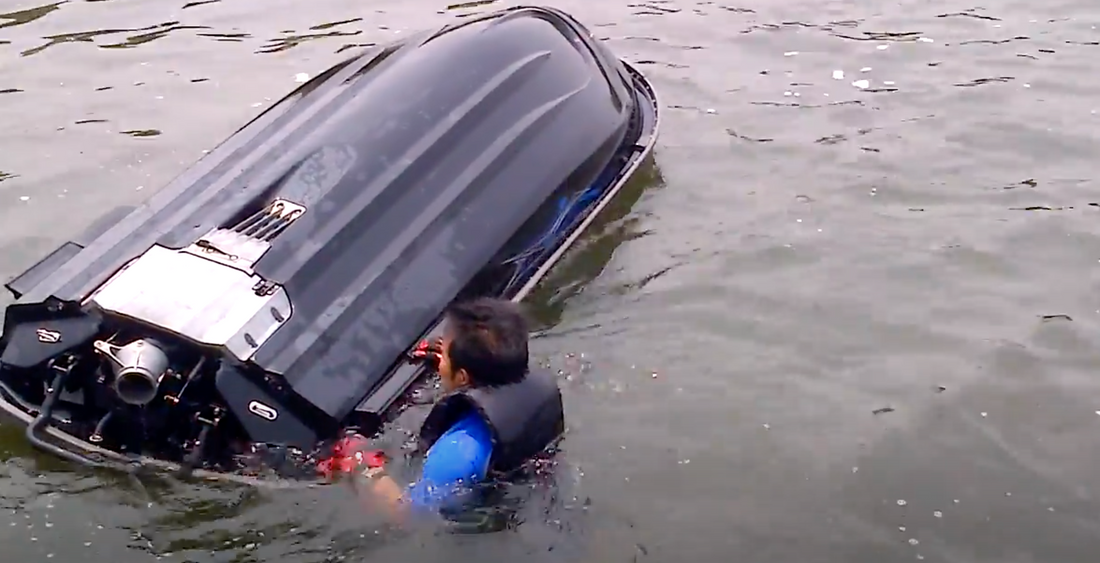
How to correctly roll over your jetski
Share
How to Properly Roll Over Your Jetski if It Capsizes
Capsizing your jetski, whether it’s a Seadoo or another personal watercraft, can be stressful, especially if you’re unfamiliar with the correct process to roll it back upright. Performing the flip incorrectly can lead to water entering the engine, causing serious damage. This step-by-step guide ensures you can safely and efficiently roll over your jetski while keeping yourself and your watercraft safe.
Step 1: Stay Calm and Assess the Situation
The first thing to do when your jetski capsizes is to stay calm. Panicking can increase the risk of injuries or mistakes when flipping your watercraft. Assess your surroundings to ensure you’re safe from oncoming boats or obstacles in the water.
Key Tips:
-
Look for the direction of the wind or current to understand how your jetski might drift.
-
Make sure your life jacket is secure and provides adequate buoyancy.
-
Avoid swimming too far from the capsized jetski—it’s your main floating device and easier to spot for rescue teams.
Step 2: Identify the Correct Rolling Direction
Most jetskis, including Seadoo models, are designed to be rolled over in a specific direction to prevent water from entering the exhaust or engine. Look for a sticker or label on the hull of your jetski, usually near the rear, indicating the correct direction to roll it over.
Why It Matters:
-
Rolling in the wrong direction can force water into the engine or fuel system.
-
Proper flipping protects internal components and avoids costly repairs.
Pro Tip: If you don’t see a sticker, refer to your Seadoo’s owner’s manual. Typically, jetskis are rolled in a counterclockwise direction, but it’s always best to confirm for your specific model.
Step 3: Position Yourself Safely
Approach the capsized jetski from the correct side as indicated by the manufacturer. Place your hands firmly on the edge of the hull or the handlebars to maintain a stable grip.
Key Tips:
-
Avoid climbing onto the jetski until it is fully upright.
-
Keep your body away from the intake grate and jet nozzle to prevent injuries.
Pro Tip: If you’re with another rider, coordinate your efforts to flip the jetski together for added leverage and control.
Step 4: Roll the Jetski Upright
Using steady and controlled movements, roll the jetski in the direction indicated on the label. Here’s how:
-
Push down on the side closest to you while pulling up on the opposite side.
-
Use your legs to stabilize yourself in the water as you exert force.
-
Continue the motion until the jetski completes its roll and is upright in the water.
Why It Matters:
-
A controlled roll prevents additional water from entering sensitive parts of the jetski.
-
Reduces the risk of the jetski flipping back over due to improper balance.
Step 5: Restart the Jetski
Once the jetski is upright, take a moment to check for visible damage or excess water. If everything looks fine, attempt to restart the engine. Here’s what to do:
-
Reinsert the safety lanyard if it has been removed.
-
Start the engine and let it idle for a moment to expel any minor water intrusion.
-
If the engine doesn’t start or sounds unusual, avoid repeated attempts as this can cause further damage.
Pro Tip: If the engine doesn’t start, you may need professional assistance. Towing your jetski back to shore is the safest option.
Additional Safety Tips
-
Carry a Bilge Pump: If your jetski takes on water, a bilge pump can help remove it efficiently.
-
Know Your Equipment: Familiarize yourself with your Seadoo’s design and manufacturer’s instructions before heading out.
-
Practice in Calm Waters: If you’re new to jetskiing, practice flipping your jetski in a controlled environment to build confidence.
Conclusion
Capsizing a jetski, whether it’s a Seadoo or any other model, doesn’t have to ruin your day on the water. By staying calm, following the manufacturer’s guidelines, and rolling your jetski correctly, you can safely recover and continue your ride. Always prioritize safety and ensure your jetski is well-maintained to reduce the likelihood of accidents. With these tips, you’ll be prepared to handle any situation confidently.
